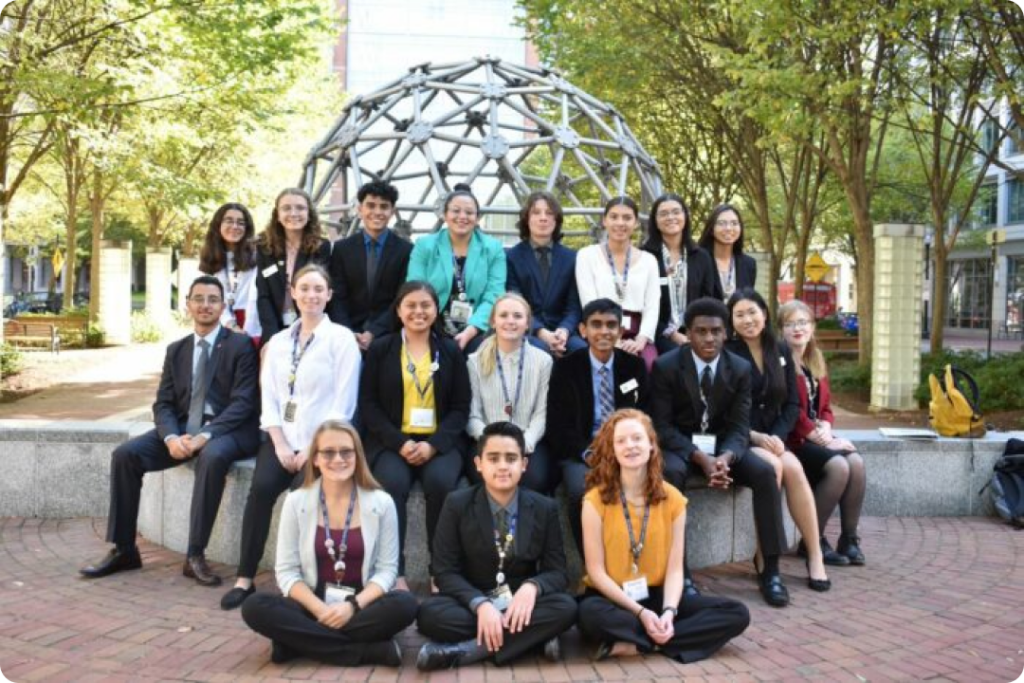Click HERE to view the 2022-2023 Community Report

The Chief Science Officer (CSO) program seeks to enhance the workforce and employability skills of 6-12th grade CSOs and their peers; foster a global network of diverse STEM leaders prepared for college, careers, and civic engagement; and increase the engagement of STEM professionals, higher education, and community organizations with K-12 schools as both partners and mentors in Action Plans for improving access to resources for all learners.!
CSOs champion communication, interest, and engagement in STEM (STEAM when you include the arts) and innovation on and off campus. Programming includes leadership training and planning STEM engagement opportunities to ensure these opportunities reflect their peers’ interests. They also streamline schools’ connection to local businesses and industry, higher education, and STEM professionals and organizations, working with these entities to offer their peers and community members hands-on experiences that build STEM awareness and important workforce skills. Collaboratively, CSOs function as a unified “cabinet,” engaging in local, state, and national STEM conversations to change the perception of STEM at the local, state and national levels; transform school and community culture; and broaden participation for all students and community members.
The Chief Science Officers program is comprised of students grades 6-12 who are elected by their peers to serve as STEM leaders and ambassadors in their schools and communities. During their time as CSOs, students are able to enhance their workforce and employability skills; join a global network of diverse STEM leaders prepared for college, careers, and civic engagement; increase the engagement of community and global STEM professionals; and implement STEM-focused action plans to impact their communities and raise awareness for the STEM causes they champion.
CSOs advocate for communication, interest, and engagement in STEM (“A” including the arts) innovation. They also streamline schools’ connections to local businesses and industry, higher education, and professional organizations, working with these entities to offer their peers and community members hands-on experiences that build STEM awareness and critical workforce skills. Collaboratively, CSOs function as a unified “Cabinet,” engaging in conversations to affect STEM perception at the local, state, and national levels, as well as transform school and community culture and broaden participation for everyone within their sphere of influence.
Launched in the fall of 2015, the CSO’s initial cohort included 78 Arizona schools and 138 CSOs. Today, the 2023-2024 cohort consists of over 800 CSOs in 15 U.S. cities, six countries, and counting! Together, they reach more than 200,000 peers and community members, and engage with 300+ mentors and partners.
These CSOs bring with them a variety of rich backgrounds and experiences. In Arizona alone, 73% of CSOs attend Title I schools, with female participants comprising 56%; males 45.5%; non-binary; 13.7 Asian; 3.4%; Black/African American 14.4%; Caucasian 39.9%; Latino 42%; Indian/Middle Eastern 3%; and Indigenous/Native/Pacific Islander at 3.6%


SciTech Institute is a collaborative initiative with the Arizona Commerce Authority and the Arizona Technology Council Foundation.